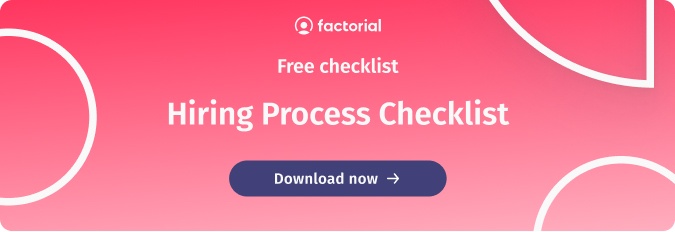Finding the right employees can be similar to looking for a needle in a haystack. It takes a lot of time and effort to find employees who not only possess the relevant skills and experience, but are also a good fit within the organization. It can be quite overwhelming at times to manage the hiring process from publishing on job boards, filtering through resumes, and organizing interviews. In order to effectively attract and retain these talented professionals from a wide pool of applicants, you will have to take a look at your hiring process. Luckily for you, we’ve got a checklist to help make this process easier.
The Recruitment Process
Recruitment is the selection process that is needed to hire the right person for an open position in your company. A good recruitment process reflects the professionalism and validity of your company. However, mistakes in hiring can become costly. That is why it is essential to develop a system that is both cost-effective and efficient in time. As a recruiting manager, you will have to make the right choices to ensure that you hire the perfect candidate who will be an asset to the organization.
Using a recruiting software will help your business to optimize its recruiting strategy. With talent acquisition software, HR managers are able to post custom job ads not only on the company website but also on sites like LinkedIn and Indeed. The applicant tracking system will allow them to follow every step of the candidate journey.
When hiring, you can choose to look for the right candidate within your company or recruit externally. Both of these options have their benefits and limitations. It is important to establish the right strategy before starting the hiring process.
Benefits of a Hiring Process Checklist
Some benefits of utilizing a hiring process checklist include:
-
Streamlined Process:
You’ll know exactly which steps to take throughout the recruitment process. This promotes efficiency, reduces the risk of skipping critical steps, and minimizes the chances of oversight or error, resulting in a smoother hiring experience for candidates. -
Shorter Hiring Timeline:
An efficient process leads to a quicker time-to-fill, helping prevent disruptions to your core business operations and reducing the strain on your team caused by being short-staffed. -
Ensures Compliance:
A well-structured hiring checklist helps ensure adherence to local employment laws. This minimizes the risk of recruitment errors and protects your organization from costly legal penalties.
Checklist to Successfully Hire New Employees
You can use this checklist to streamline your hiring process.
Before the hiring process
- New position or replacement: The first step in the hiring process is to determine the need for a new position in the company. Hiring managers will want to be aware of the dangers and advantages of both understaffing and overstaffing. You can perform a cost-benefit analysis to examine if the new employee will cover the costs of recruitment and employment.
- Write job description: Create a clear and compelling job description that describes the responsibilities of the job and the qualification that is needed from the candidate.
- Post job offer: Publish the job offer on your website, LinkedIn and other relevant channels.
- Determine salary range: Research wages and assess the position to determine a correct and competitive salary range.
During the hiring process
- Search for candidates: Recruit qualified candidates from the job posting that you have published on different channels. If there is no pool to choose from, you will have to consider other ways to find potential candidates or adjust your job description.
- Select candidates: Select the candidates with the right qualifications.
- Arrange planning: Create a schedule and arrange a space where you can conduct the interviews.
- Contact candidates: Send an email or call potential candidates to discuss the details of the interview.
- Interview candidates: Conduct interviews with the selected candidates to determine if they are the right fit for the position.
- Prepare and send offer letter: After checking references and selecting the top candidate, you can prepare the offer letter and give the chosen candidate the good news.
- Notify candidates who were not selected: Contact the candidates who were not selected for the position and offer them feedback.
After the hiring process
Now that you have hired the right employee for the position, you can start the onboarding process.
Don’t forget to download your free hiring process checklist. 👆 A well-defined hiring process checklist ensures your a cohesive recruitment process. It allows minimizes errors, enhances the quality of hires, and reduces the recruitment process length. All of which contributes to an overall boost in your company’s efficiency and productivity.
Automate your Hiring Process
A powerful all-in-one business management tool like Factorial is essential to streamlining your recruitment processes. It centralizes job postings, candidate information, and all communication between potential hires. This allows you to save time and make smarter, quicker decisions when it comes to filling critical roles. Additionally, Factorial’s AI cuts down time spent on writing job descriptions and filtering through applications to find a match.
In today’s digital world, let platforms like Factorial help ease your workload and grow your team. See Factorial in action with your free demo.



